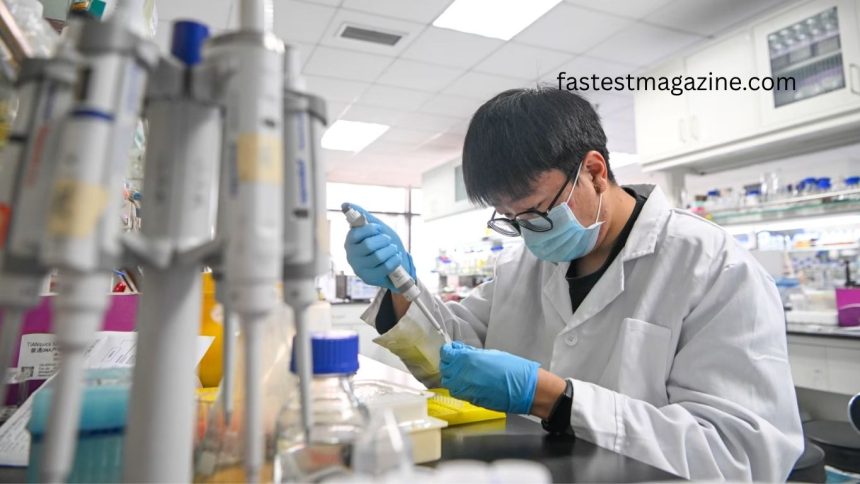In the global race to attract the world’s brightest minds, a striking shift is unfolding. China is rapidly gaining ground as dozens of top scientists trained and employed in the United States make the move east. The trend signals a new era in global innovation—one where Beijing’s strategic investments in science and technology are drawing the very talent that once powered America’s research dominance.
Over the past year and a half, at least 85 leading and emerging scientists have left American universities and institutions to join Chinese research centers full-time, according to a CNN analysis. More than half of them made the move in 2025. This “reverse brain drain” reflects deepening anxieties about America’s ability to retain world-class researchers—an advantage that has long underpinned its status as the global leader in science and technology.
Read More: https://fastestmagazine.com/hesai-makes-a-bold-move/
The Rise of China’s Scientific Magnetism
For decades, China has sought to reclaim and attract scientific talent, particularly those who left to study or work abroad. Many of these scholars became leaders in U.S. laboratories and universities, contributing significantly to American innovation. Now, a growing number are returning—driven by opportunity, national pride, and changing conditions in the U.S.
China’s government has doubled down on its goal of becoming a global innovation powerhouse. President Xi Jinping has repeatedly emphasized that scientific self-reliance is vital to national security and economic strength. As the U.S. imposes tighter restrictions on technology exports and research collaborations, Beijing has responded with unprecedented funding, favorable policies, and high-profile recruitment programs.
Meanwhile, new developments in Washington have accelerated the shift. The Trump administration’s plans to cut federal research budgets, increase oversight on international scholars, and raise H1-B visa fees have made the U.S. less welcoming for foreign researchers. These measures, combined with political scrutiny of Chinese-born scientists, have created uncertainty across American universities.
“Chinese universities see this as a gift from Trump,” says Yu Xie, a Princeton sociologist who has been advising institutions in China. “You will see a proliferation of new and improved research programs in all areas within China.”
China’s Talent Offensive
Chinese universities and tech companies are moving quickly to seize the moment. Behind the scenes, recruiters and academic leaders are actively reaching out to overseas scientists—many of whom have grown disillusioned with the shifting U.S. research climate.
At Fudan University in Shanghai, protein chemist Lu Wuyuan, formerly a tenured professor at the University of Maryland, has witnessed a sharp rise in overseas applicants. “Chinese universities are bending over backwards to attract global talent,” he said. “This return of overseas-educated scientists is a robust and perhaps irreversible trend.”
Some efforts are more visible. Wuhan University, for example, recently issued a global call for professors specializing in robotics, AI, and cybersecurity. It offered competitive packages, including housing stipends, bonuses, and matched funding of up to 3 million yuan (over $400,000) per project. Similar offers are appearing across China, often tied to the government’s “Outstanding Young Talent” and Qiming programs, which fund both academic and industrial researchers.
A Scientific Powerhouse in the Making
China’s transformation from a developing nation to a scientific heavyweight has been decades in the making. In the late 1980s, scholars like Lu left a resource-strapped China to study abroad. “China was poor and scientifically backward,” he recalled. “I’m grateful to the U.S. for the opportunities I had.”
But today’s China is a different story. With massive state investment, cutting-edge infrastructure, and rising global prestige, the country has closed much of the innovation gap. According to the OECD, China’s research and development spending reached $780 billion in 2023, just behind America’s $823 billion.
Xi Jinping has set a national goal to make China “strong and self-reliant in science and technology by 2035.” Already, results are evident. China’s space program recently brought back the first-ever samples from the far side of the moon. In artificial intelligence, the Chinese start-up DeepSeek stunned Silicon Valley earlier this year with a chatbot that rivals OpenAI’s latest model—at a fraction of the cost.
Chinese universities, too, are climbing the global ranks, with several breaking into the world’s top 50. And according to the Nature Index, Chinese scientists now publish more research in top natural and health science journals than their U.S. counterparts.
Challenges and Contradictions
Yet, despite these advances, challenges remain. Experts caution that China’s progress depends not only on funding but also on academic freedom and openness—qualities that have historically defined American science. The Chinese Communist Party’s growing influence over universities and private companies may deter some researchers who value independence and free inquiry.
Moreover, China’s strict political environment and cultural barriers can make adjustment difficult for foreign-born or non-Chinese-speaking scientists. While Chinese nationals may be drawn by a sense of contribution or family ties, many Western researchers hesitate to relocate.
Statistics underscore this complexity. More than 83% of Chinese PhD graduates in science and engineering who studied in the U.S. between 2017 and 2019 were still living in America in 2023, according to U.S. government data. Those who do return sometimes face online criticism in China, especially if perceived as “too Western” or “pro-American.”
America’s Self-Inflicted Wounds
Observers argue that the United States’ restrictive approach toward foreign researchers, especially those of Chinese descent, is undermining its own scientific leadership. Programs like the China Initiative, launched in 2018 to investigate potential espionage, have fueled fear and distrust among academics. Although the initiative was scrapped in 2022, its effects linger.
A Princeton University study found that after the initiative began, departures of Chinese-origin scientists from the U.S. rose by 75%, with two-thirds moving to China. Many left not because they wanted to, but because they felt targeted.
One of them, Fudan University’s Lu, recalls how his once-celebrated collaborations with China became the subject of federal inquiry. Though cleared of wrongdoing, he chose early retirement and relocation. “These short-sighted policies have choked off mutually beneficial U.S.-China collaboration,” he said. “The harm to America’s scientific ecosystem is likely far greater than to China’s.”
Frequently Asked Questions:
What is the main idea of this article?
The article explores how China is rapidly closing the innovation gap with the United States by attracting top scientists, researchers, and tech talent from around the world—especially those previously based in U.S. universities and laboratories.
Why are scientists leaving the U.S. for China?
Many researchers cite reduced U.S. funding, stricter visa policies, and political scrutiny—particularly toward Chinese-born scientists. Meanwhile, China offers generous research grants, advanced facilities, and strong government support for innovation.
How many scientists have recently moved from the U.S. to China?
According to CNN data cited in the article, at least 85 top and mid-level scientists have relocated from American institutions to China within the past 18 months, with over half making the move in 2025.
What incentives is China offering to attract global talent?
China has launched several recruitment programs such as the Qiming initiative and Outstanding Young Talent Program, offering high salaries, housing benefits, large research grants, and new “K visas” designed to attract young global researchers.
How has U.S. policy contributed to this brain drain?
The U.S. government’s proposed cuts to research budgets, higher visa fees, and continued security investigations into Chinese-born scholars have created an atmosphere of uncertainty that pushes many scientists to seek stability elsewhere.
How is China benefiting from the influx of returning scientists?
The return of internationally trained researchers is boosting China’s R&D capabilities, strengthening its high-tech industries—such as AI, semiconductors, and biotechnology—and accelerating progress toward Xi Jinping’s goal of scientific self-reliance by 2035.
Are all Chinese scientists returning from the U.S.?
Not all. Studies show that a large majority of Chinese PhD holders still remain in the U.S., but the number returning home has risen sharply since 2020 due to growing opportunities in China and political tensions in America.
Conclusion
China’s determined rise in the global talent race marks a pivotal shift in the world’s scientific and technological landscape. By combining massive state investment, generous research incentives, and a clear vision for innovation-driven growth, China is steadily eroding America’s long-held dominance in research and development.
However, this transformation also exposes the fragility of U.S. leadership, as restrictive policies and funding cuts risk pushing away the very minds that once fueled its success. While China’s progress is undeniable, maintaining long-term global leadership will depend not only on financial power but also on openness, collaboration, and intellectual freedom.













